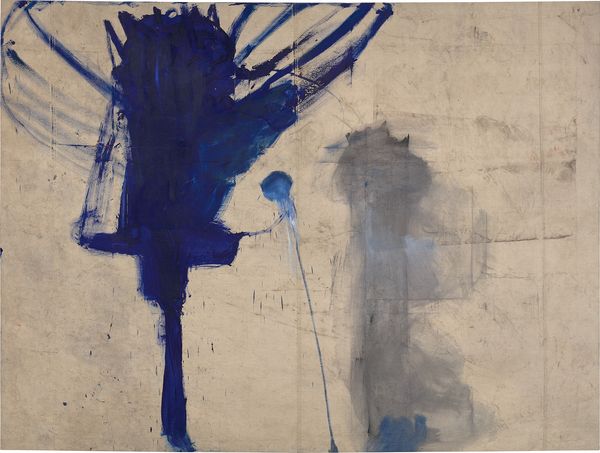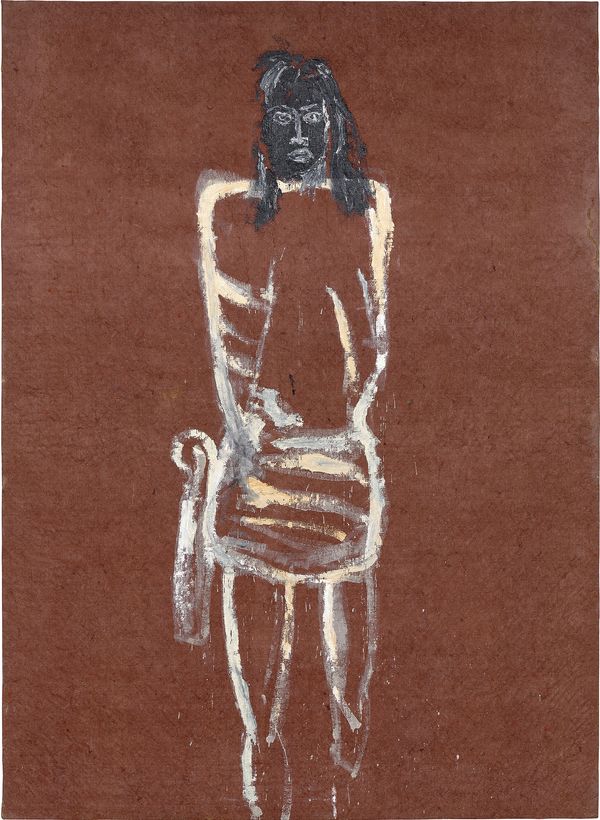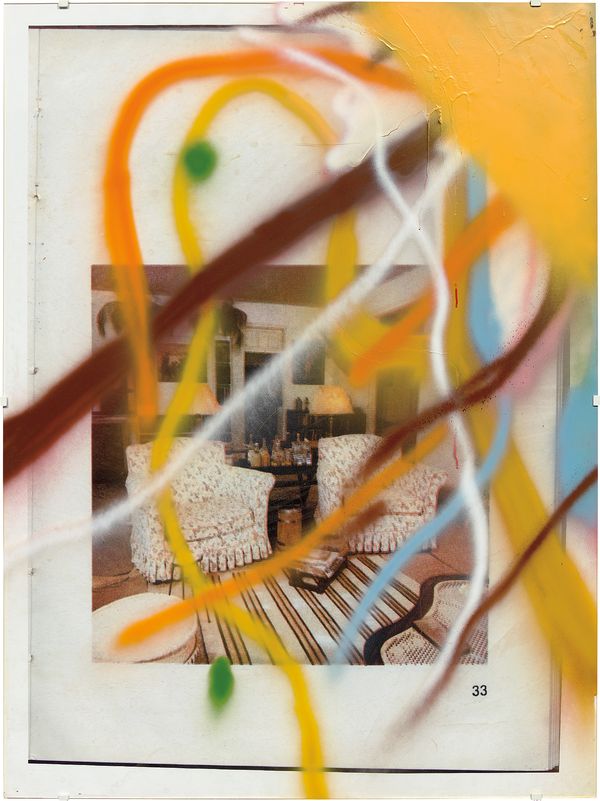Julian Schnabel Portrait of God from the series Mutant King, 1981. Estimate: $150,000-200,000.
New Now at Phillips New York, 4 March.
Since its establishment in 1885, La Biennale di Venezia has become one of the world’s most prestigious cultural organizations at the forefront of promoting and propelling artists to critical acclaim. With a fresh iteration that takes on a new theme every two years, the Biennale has decisively proven to be on the pulse of the most significant artistic movements that have emerged since its inauguration. Indeed, Julian Schnabel’s inclusion in the 1980 and 1982 iterations signified the emergence of an artistic movement that would come to define the 1980s.
Julian Schnabel Angela, 1982. Estimate: $70,000-100,000.
In sharp contrast to the prevailing movements of the 1960s and 1970s that witnessed the “dematerialization” of the art object, the 1980s were defined by a return to the traditions of painting. Emerging from the conceptualist and minimalist practices that dominated for two decades, Neo-Expressionist artists, such as Schnabel, Jean-Michael Basquiat, Eric Fischl and David Salle, re-invigorated and re-introduced painting with figurative subjects rendered in gestural brushstrokes upon canvases of heroic scales. Shortly after his first exhibition at Mary Boone’s gallery in New York in 1979, Schnabel was selected for the 1980 iteration of the Venice Biennale, which allowed him to introduce this radical shift towards painting to an international audience. Included in the following iteration of the Venice Biennale, Schnabel’s Angela, 1982, is one of the largest and earliest works by the artist to come to auction and exemplifies Schnabel’s practice during the years that came to define the radical return to painting.
Julian Schnabel Untitled, 2017. Estimate: $40,000-60,000.
Much in the spirit of the Venice Biennale’s comprehensive program, which spans beyond the Arts sector to include Architecture, Cinema, Dance, Music and Teater, Schnabel has expanded upon his breakthroughs of the 1980s to establish a multidisciplinary practice of painting, sculpture and film. While Schnabel’s oeuvre has diversified over the decades, his practice has maintained a deep connection to his early paintings. Considering film to be a natural extension of his paintings, his first full-length feature film, Basquiat, 1996, chronicled the life and career of a fellow pioneer of Neo-Expressionist painting. With his second film, Before Night Falls, 2000, Schnabel returned to Venice, this time winning the Grand Jury Prize at the Venice International Film Festival—an achievement that underscores the significance of Venice and the Biennale within Schnabel’s career and a wider art-historical context.
Schnabel’s paintings, sculptures and films have continued to inform one another, and while his oeuvre has evolved and expanded over the decades following his inclusion in the Venice Biennale in the early 1980s, it has also shown an enduring connection to these formative years. Exceptional paintings from this period, Portrait of God from the series Mutant King, 1981, and Angela, 1982, embody the practices that became the pillars of Schnabel’s multidisciplinary endeavors.


